Studio Lighting
Lighting in an image is such an important factor, it can not only determine how bright or dark an image is but also how different the mood or atmosphere is. Studio lighting is used because it allows us to manipulate the lighting of a photograph to create a desired texture, vibrancy or shadow on our subject. Studio lighting also allows photographers to experiment with different styles and perspectives when capturing an image, it is important for them to be able to photograph abstractly and naturally.
1 Point Lighting – This style of lighting involves just one light, the key light, which is the main light source that lights up the subjects face. Images taken using 1 point lighting usually contain lots of shadows surrounding the subject, this is due to the singular light providing the only highlights in one specific spot. This lighting style can create very dramatic and abstract images due to the contrast between the bight highlights and dark shadows.
Rembrandt – Chiaroscuro Technique
Chiaroscuro is an art and photography technique which shows a bold contrast between light and dark. It is an Italian term which translates as light-dark, and refers to the balance and pattern of light and shade in a painting or drawing. Painters of the Renaissance and Baroque periods used this technique to create a dramatic atmosphere in their work to interest and excite their viewers. For example, above are two paintings by the Baroque painter Rembrandt, who used Chiaroscuro to illuminate one side of his subjects face- therefore leaving the other in shadow creating an impressive dramatic image. Rembrandt’s contrast between light and dark was inspirational throughout the baroque period, many other artists produced similar paintings such as Caravaggio and Johannes Vermeer.
Peter Lindbergh
Peter Lindbergh (1944-2019) was a German fashion photographer and film director. Considered a pioneer in photography, he introduced a form of new realism by redefining the standards of beauty with timeless images. His humanist approach and idealisation of women sets him apart from other photographers as he privileges the soul and the personality. Lindbergh is considered to be one of the most influential contemporary photographers to date and his use of Chiaroscuro in his images produces a mysterious atmosphere which intrigues the observer greatly.
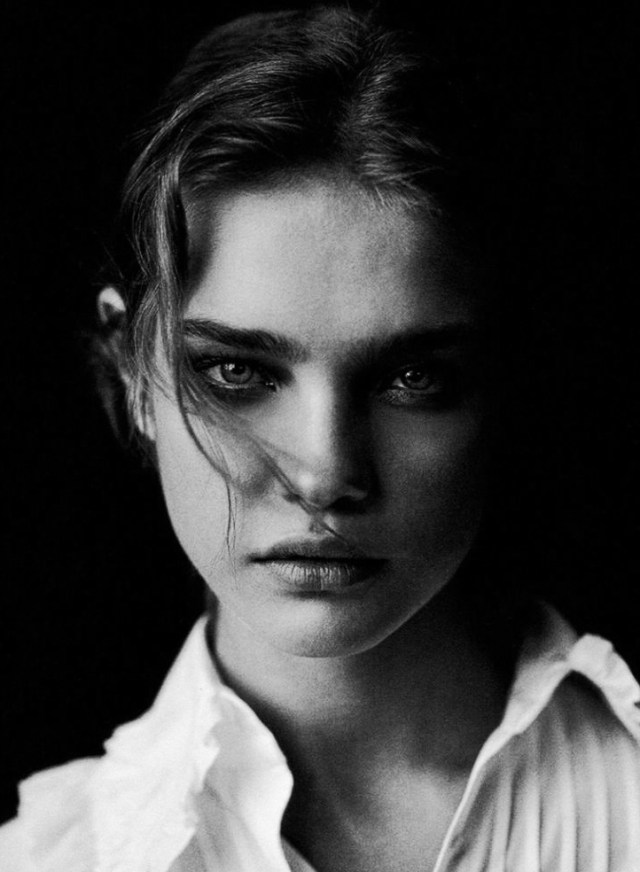
Lindbergh uses Chiaroscuro in this image to create a cinematic shot that captivates the observer. He has clearly used 1 point lighting to illuminate the left side of the model’s face, which produces a dark shadow on the right. Additionally, Lindbergh’s images are black and white which furthers the mysterious mood created by the deep shadows falling across the model’s face. The tonal range in this image is limited to a main white highlight, grey mid-tone and black shadow- with the darkest point of the image in the background. This black background produces negative space in the photograph, emphasising the focal point of the subject by allowing her to stand out against it. Furthermore, the harsh contrast between light and dark in this image creates several sharp lines. For example, on the models nose we can see a straight dark line formed by the Chiaroscuro lighting. The composition of the image is not abnormal to those usually printed in a vogue magazine, as the subject is directly addressing the observer through eye contact straight down the camera lens. Also, the model’s eye contact with us creates an enticing atmosphere in the image, supported by the secretive shadows that surround her.
Photoshoot Plan
Who – I plan on photographing a friend who has done modelling in the past in hopes of capturing images with more professional poses. Additionally, my model will be comfortable in front of the camera so will be relaxed when experimenting with different angles and poses.
What – I will attempt to photograph my model using Chiaroscuro, letting shadows fall across her body, face and the background of the photograph.
Where – My plan is to do the photoshoot in the photography studio in school as the professional lighting equipment will allow me to create the Chiaroscuro images more easily and effectively.
Why – I am going to produce this photoshoot in hopes of broadening my knowledge of using studio lighting and shadows to create different moods and atmospheres in my images. I also wish to experiment with lighting techniques and take inspiration from Peter Lindbergh’s work.
How – I plan on using 1 point lighting with a spotlight to create most of my Chiaroscuro images, I wish to experiment with changing my camera’s white balance and ISO settings whilst also changing the whiteness of my lighting to find the most effective lighting colour.
Contact Sheets
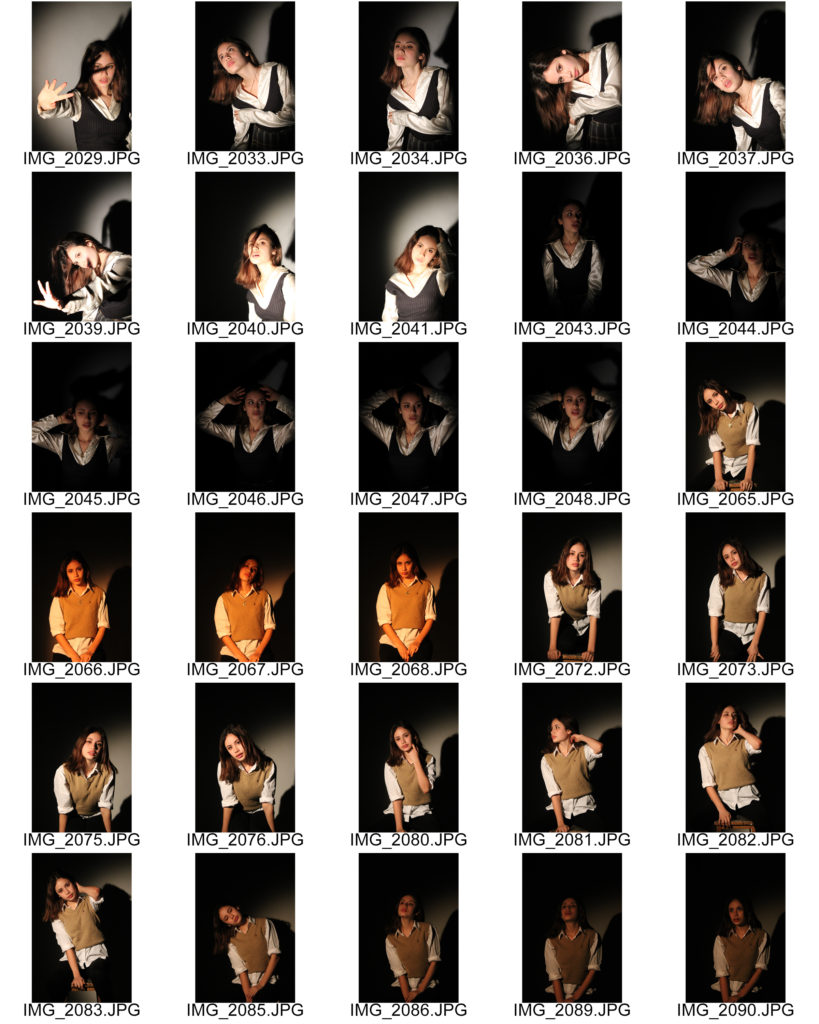
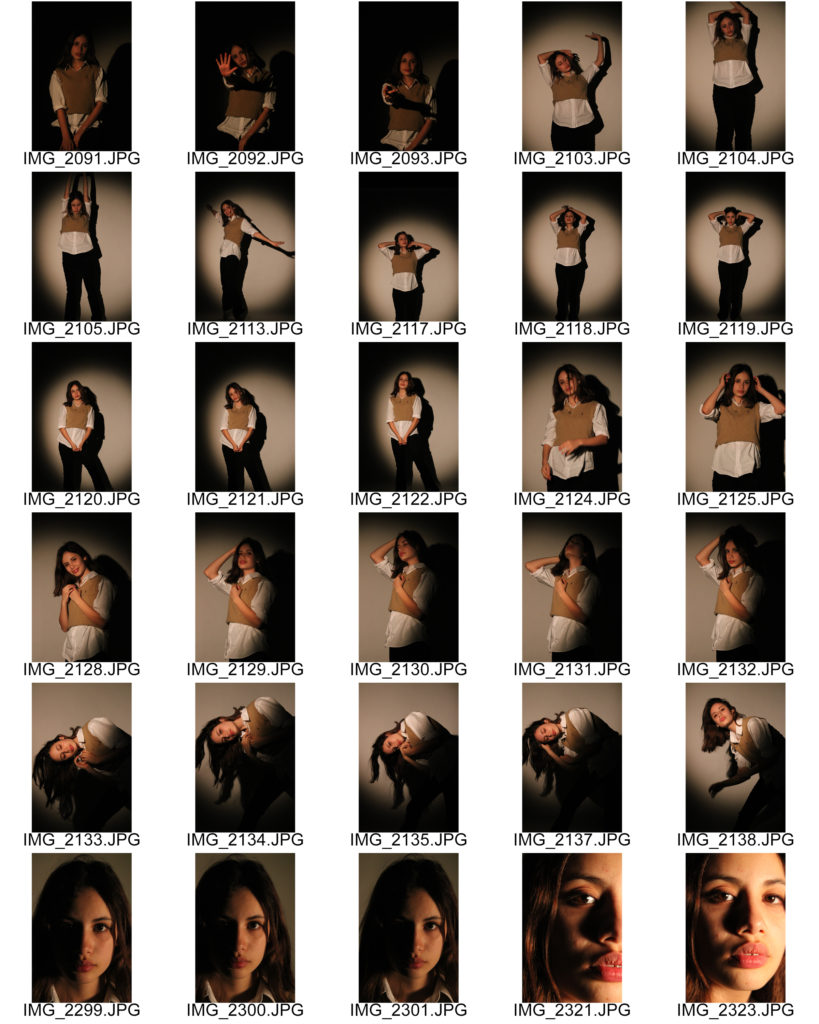
Selected Images
Final 1 Point Lighting Portrait
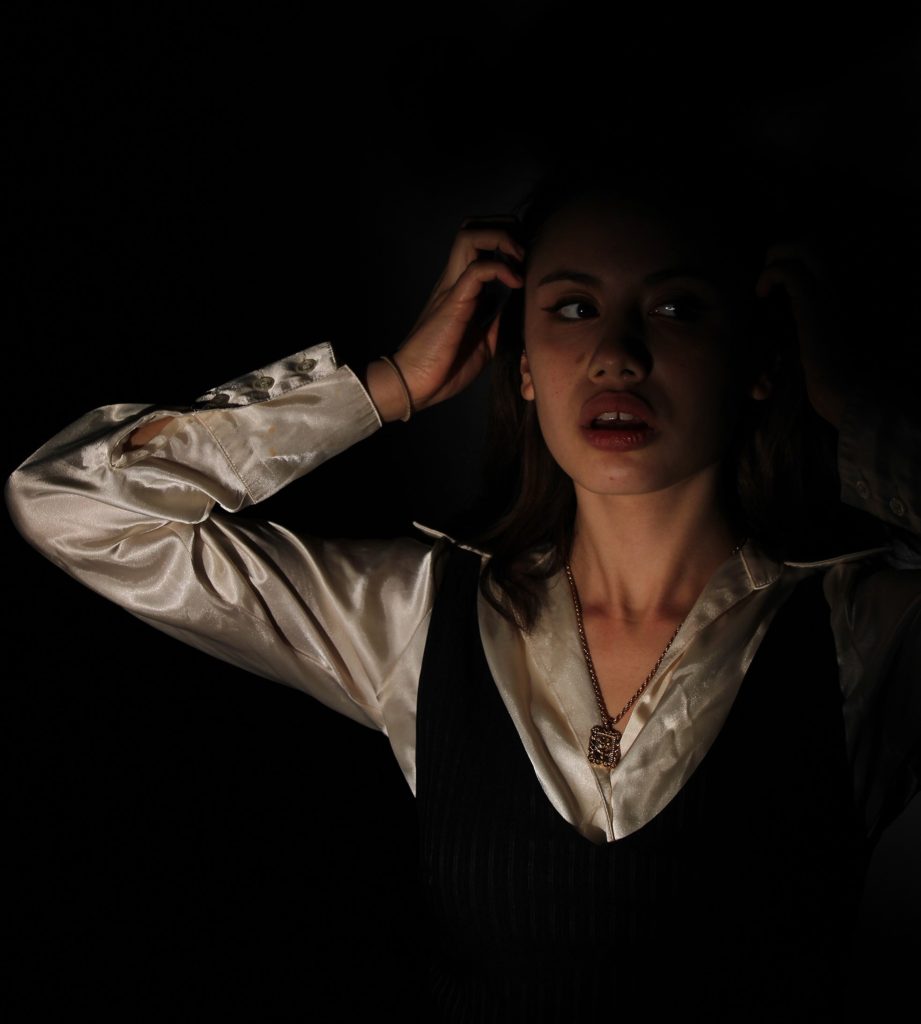
I have chosen this photograph for my final 1 point lighting image as I believe it shows a successful example of chiaroscuro and the abstraction of using a singular light. I produced this image using a spotlight to create the 1 point lighting set up, I had the key light positioned to the left of my subject and angled slightly below their chin pointing upwards. This therefore produced dark shadows surrounding the subject and falling across the right side of their face as my key light was close enough to her that it limited the highlights falling anywhere else. I believe this manipulation of shadows has created a mysterious atmosphere as the limited light connotes the idea that the subject is being consumed by the darkness. Additionally, with the subject not having direct eye contact with camera lens it forms a cold and disconnected aura in the image, almost as if she is looking away from the light because of a darker temptation. I experimented with changing my white balance to ‘daylight’ so I could manipulate the image’s lighting to look like ‘golden hour’, however after consideration I re-took my image with the automatic white balance as the warmer lighting didn’t reflect the desired cold atmosphere. Similar to the work of Peter Lindbergh, my solid black background allows the subject to stand out clearly. However, there are still moments in my photograph where parts of the subject blend with the shadow, for example as she is wearing a black vest it creates the impression she is being absorbed into the background. I think that I have succeeded in creating a dramatic image using chiaroscuro and 1 point lighting as my contrast in light and dark alludes to a clear story and produces a mysterious atmosphere.
Experimenting With 3 Point Lighting
3 Point Lighting – This style of lighting in photography involves 3 main sources of light usually in 3 different positions. The main light sources used are a key light, fill light, and backlight. In 3 point lighting images, in order for the subject to not blend with the background, the backlight is used to separate them. 3 point lighting is one of the most popular lighting set-ups in photography as it allows the photographer to clearly illuminate their subject and limit the amount of shadows created around them.
During the photoshoot I also wanted to experiment with using 3 point lighting to minimise the amount of shadows and see how it changed the atmosphere of my images. My plan was to keep the singular spotlight to the left of my subject, while also adding a ring light in the middle and a LED panel light on the right. I experimented by using warmer tones in one light compared to colder in the others to see how it would effect the image’s composition of shadows.
Final 3 Point Lighting Results
It is clear that by adding 2 more lights to this photoshoot it creates a completely different mood in the images. Before, the dark shadows surrounding and engulfing the subject created a secretive mysterious atmosphere. However, now by adding the ring light and panel, the photographs are brighter and clearer for the observer. This change in lighting created a more playful happy mood, nevertheless I still wanted to experiment with the subject’s facial expressions to see if I could change it further. By having her make direct eye contact with the camera lens while sitting in relaxed positions, it shows the subjects confidence and lets her connect with the observer. I angled the camera slightly above her eye-level to prevent the idea that the subject was looking down the lens in an intimidating manor. Instead, I believe this additional lighting and engagement with the observer creates a more laid-back atmosphere and a welcoming mood.









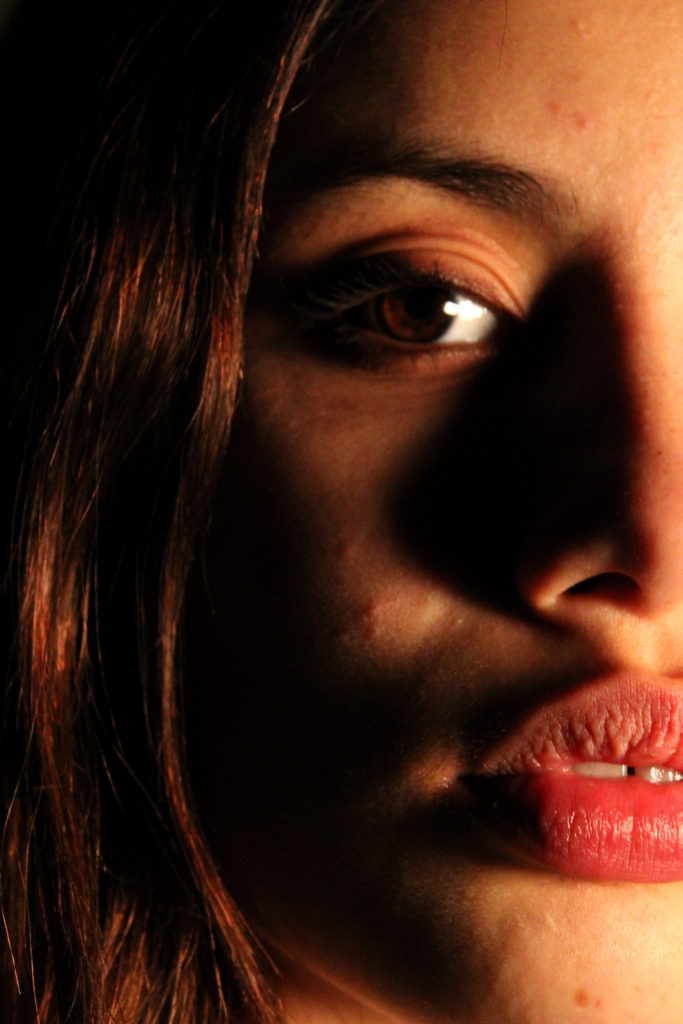
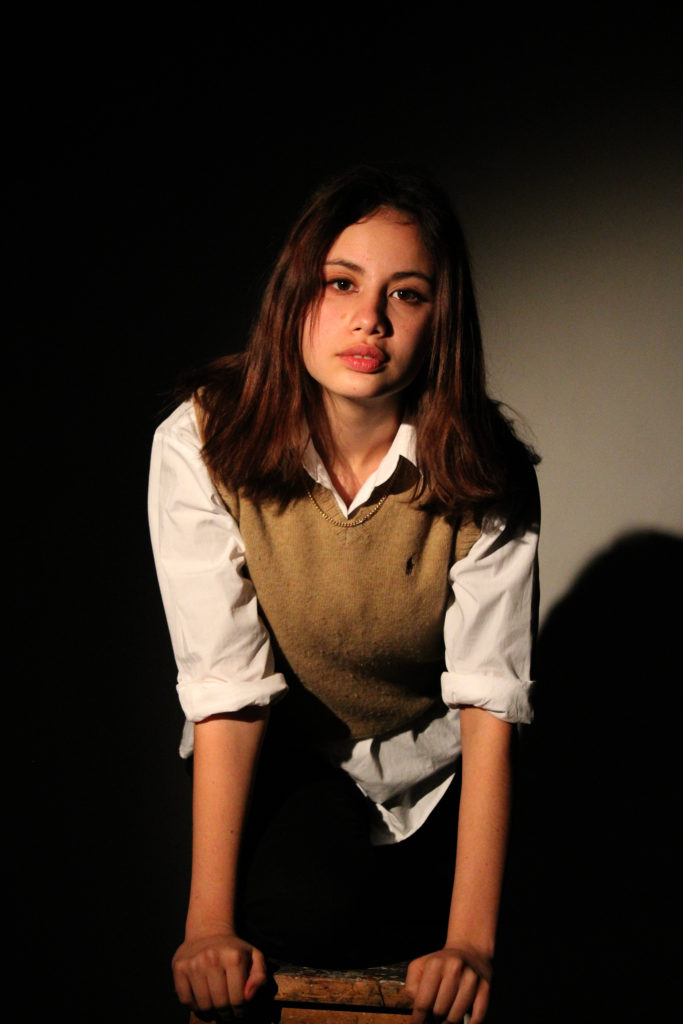





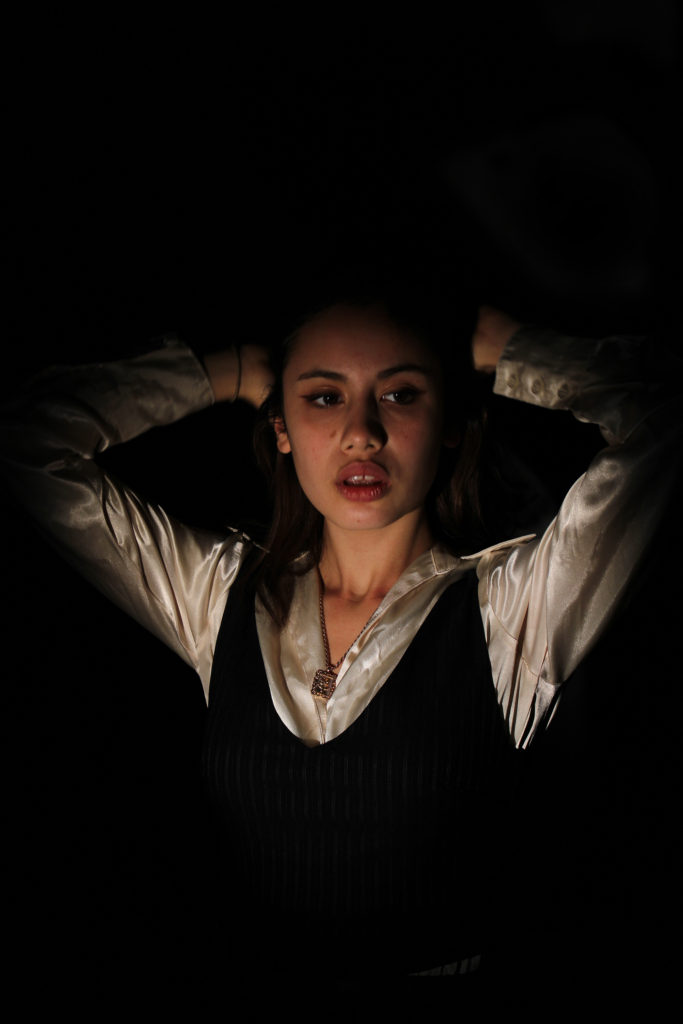


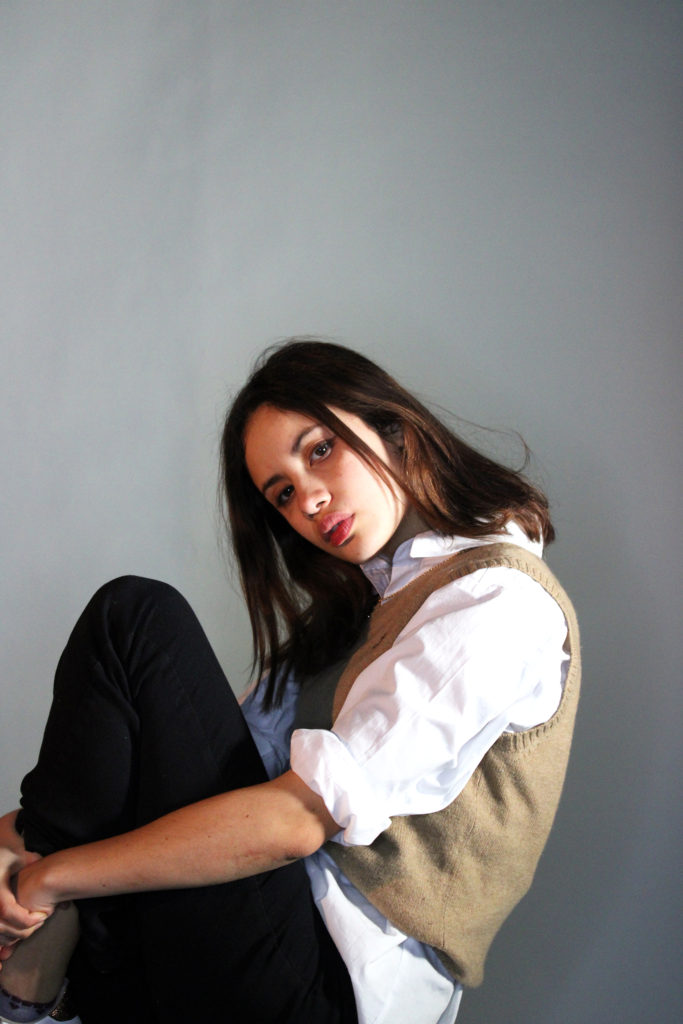

Great bog post!
Well done…and keep producing more of the same please!